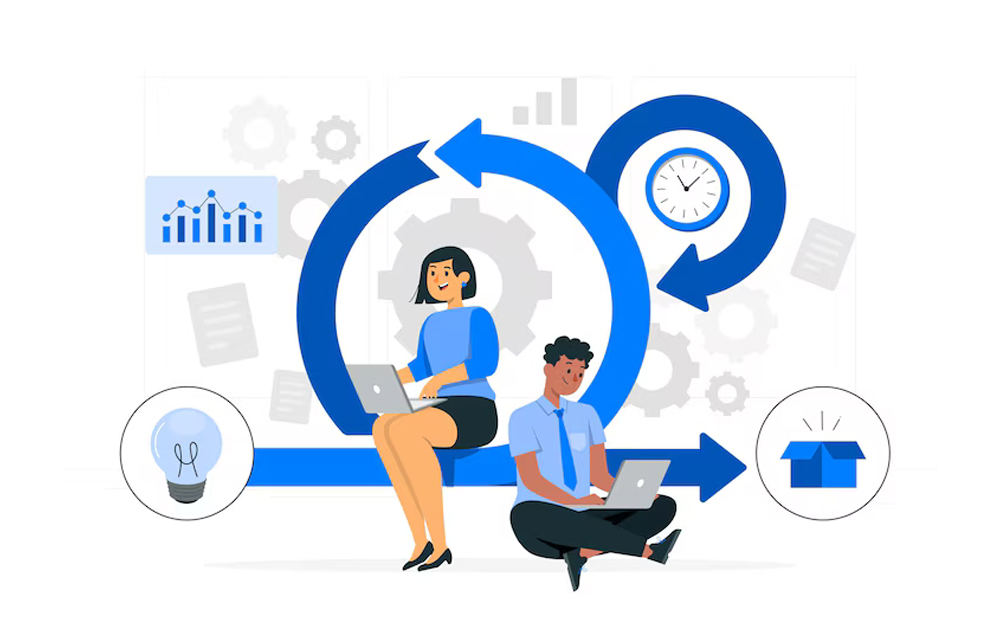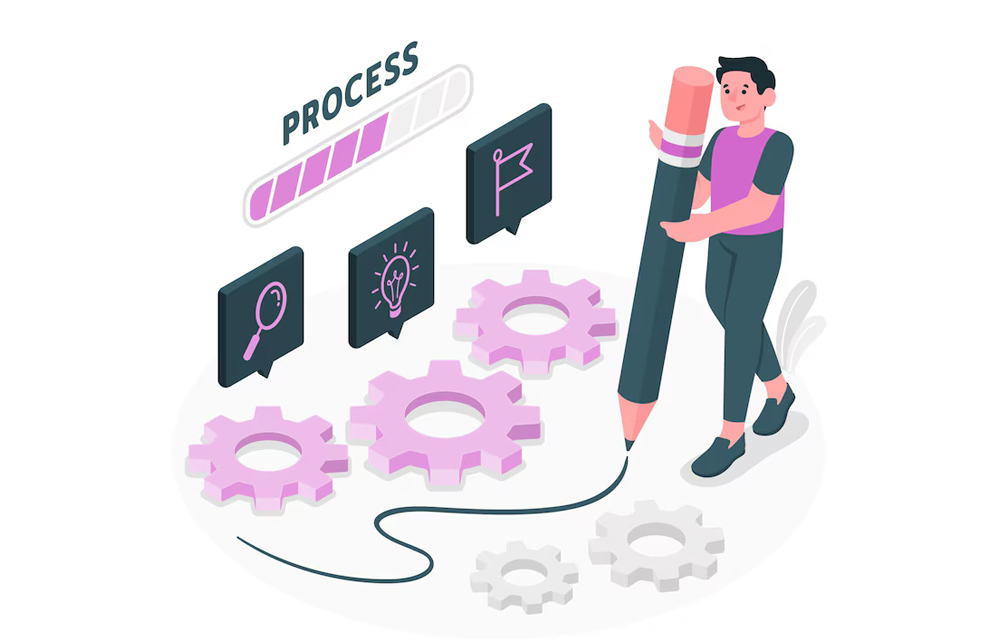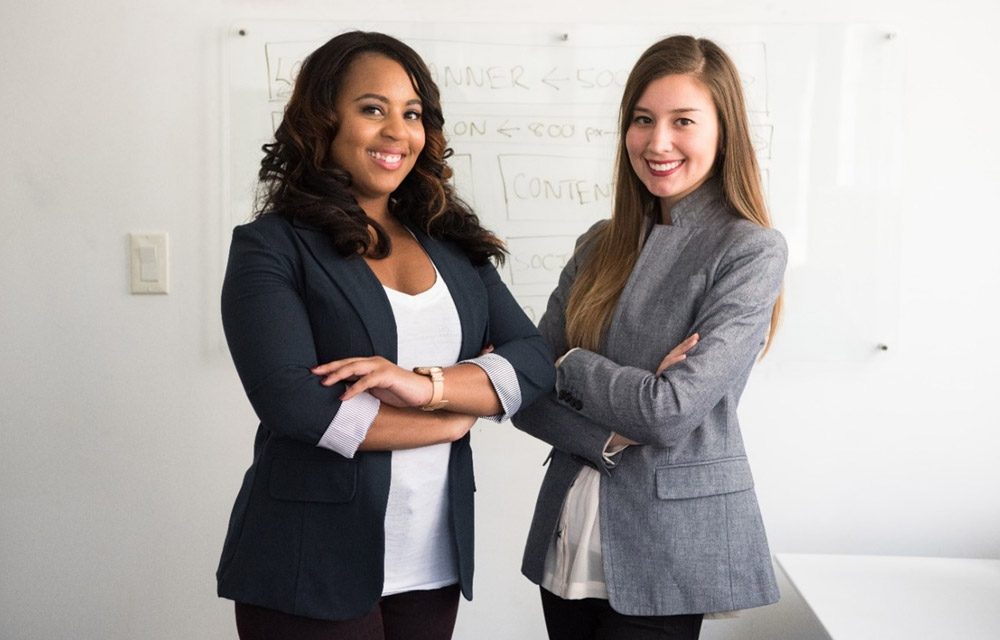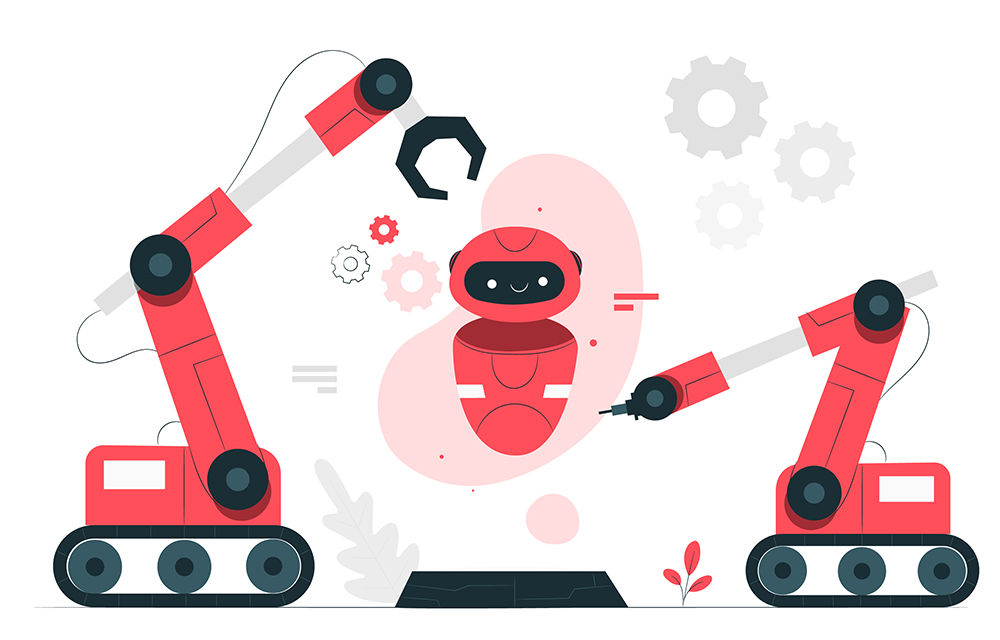It's important to acknowledge the vital role played by administrative professionals in the success of any busi...
Brickwork Blogs


Introduction
In today’s competitive landscape, inefficient processes can hinder growth and lead to missed opportunities. Whereas companies with streamlined processes are 20% more likely to outperform their competitors, underscoring the need for continual improvement.
This is where Design thinking comes into play. A human-centered approach, originally developed for product design, is now revolutionizing how businesses enhance their processes. By focusing on understanding user needs, fostering creativity, and iterative testing, design thinking offers a fresh perspective on problem-solving and process optimization.
In this blog, we'll explore how design thinking can transform your process enhancement efforts.
Let’s jump right in.
What is Design Thinking?
Design thinking is a flexible, iterative approach that teams use to deeply understand users, question assumptions, redefine problems, and develop creative solutions. This method is particularly effective for addressing complex or ambiguous issues and consists of five key phases: Empathize, Define, Ideate, Prototype, and Test.
Five Stages of Design Thinking
Stanford University's Hasso Plattner Institute of Design, widely recognized as the d.school, is celebrated for its innovative approach to design thinking. Their process comprises five stages: Empathize, Define, Ideate, Prototype, and Test. These stages are not always linear; teams may work on them simultaneously, in varying sequences, and revisit them as necessary.
Empathize—Research Users' Needs
In this initial stage, the team focuses on understanding the problem through user research. Empathy is essential in design thinking as it helps designers move beyond their own assumptions and gain a genuine understanding of users and their needs.
Define—State Users' Needs and Problems
After gathering insights, the team analyzes and synthesizes the information to pinpoint the core issues. These insights are articulated as problem statements. Creating personas may help ensure the design remains centered on real users.
Ideate—Challenge Assumptions and Generate Ideas
With a clear understanding of the problem, the team moves to brainstorming and exploring various perspectives. This stage is about thinking creatively and developing innovative solutions to address the problem statements.
Prototype—Develop Preliminary Solutions
In this experimental phase, the team creates scaled-down versions of potential solutions to test their feasibility. These prototypes can be simple and inexpensive, such as paper models, designed to explore and refine the ideas.
Test—Evaluate the Solutions
The team tests the prototypes with actual users to determine their effectiveness in solving the problem. Testing may reveal new insights, prompting the team to refine the prototype or revisit earlier stages, such as redefining the problem.
Applying Design Thinking to Business Processes
Design thinking can significantly enhance various business processes, driving faster growth and greater innovation. Here are some key applications:
1. Understanding the Customer Journey
Design thinking helps businesses map out the customer journey—from initial awareness through to purchase and beyond. By gaining insights into each stage, companies can pinpoint pain points and uncover opportunities for improvement.
2. Enhancing the Employee Experience
Design thinking can also be applied to improve the employee experience. By empathizing with employees and identifying their challenges, businesses can create a more engaging and productive work environment.
3. Developing New Products and Services
Design thinking is invaluable for developing new products and services that truly resonate with customers. By starting with a deep understanding of user needs, businesses can create innovative solutions that stand out in the marketplace.
4. Streamlining Business Processes
Design thinking can also streamline business processes, making them more efficient and cost-effective. By identifying bottlenecks and inefficiencies, businesses can optimize workflows to save time and reduce expenses. For instance, a financial services firm might use design thinking to simplify its loan application process, tackling issues such as unclear documentation requirements and lengthy approval times. This can result in a more efficient process and improved customer satisfaction.

Benefits of Using Design Thinking in Business Processes
Leveraging design thinking in business processes offers numerous advantages:
Tips for Effectively Applying Design Thinking to Business Processes
To make the most of design thinking in business processes, consider these key strategies:
Also Read:What is the Role of Process Improvement in Maximizing Efficiency?
Conclusion
Design Thinking offers a transformative approach that focuses on empathy, creativity, and iterative improvement. By adopting these principles, organizations can design processes that are not only more efficient but also better aligned with the needs of stakeholders.
This approach fosters innovation, boosts efficiency, and enhances stakeholder satisfaction, all while building resilience for future challenges. As you enhance your processes, remember that Design Thinking isn’t just about refining operations—it’s about fostering a culture of continuous improvement and meaningful, lasting change.


